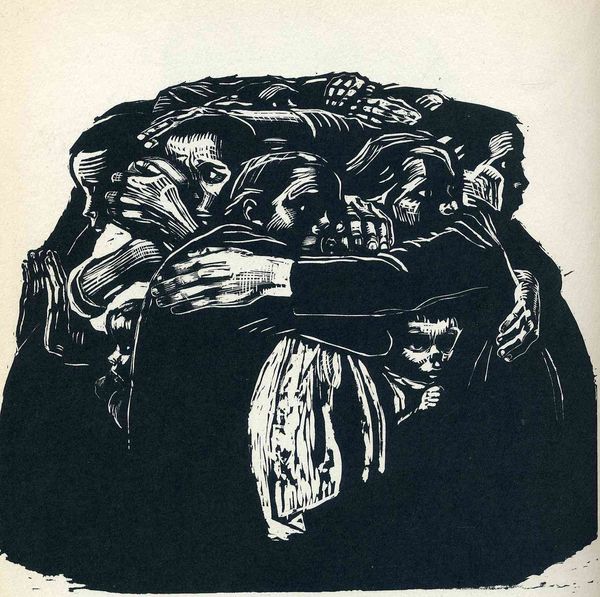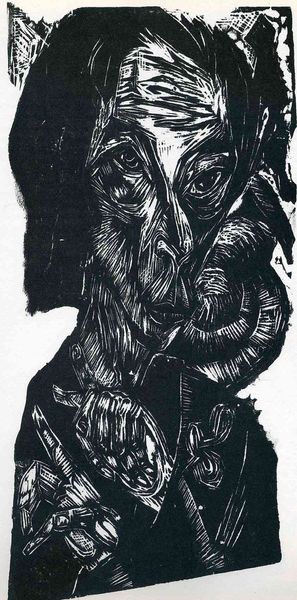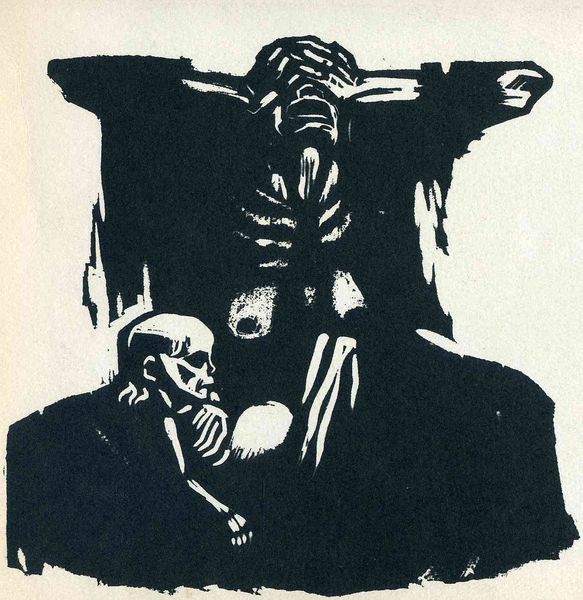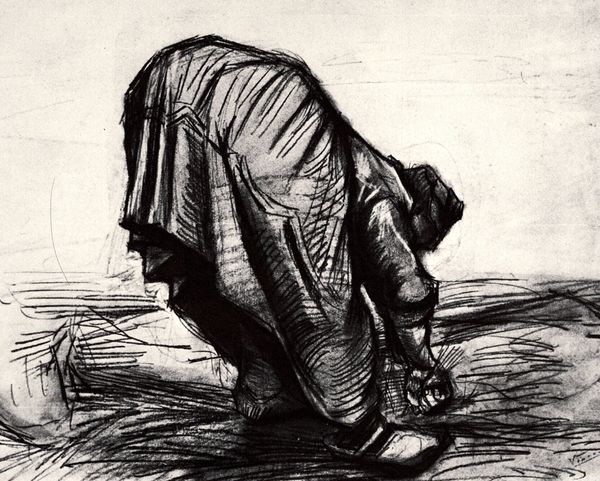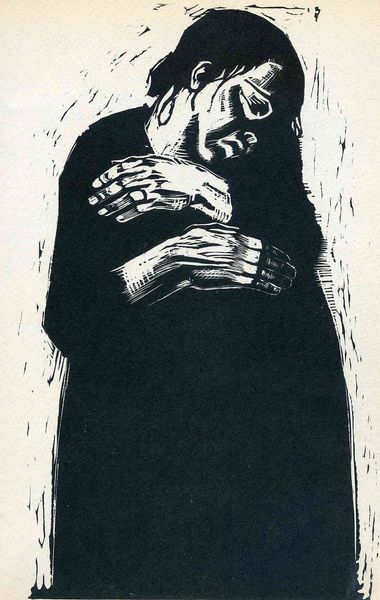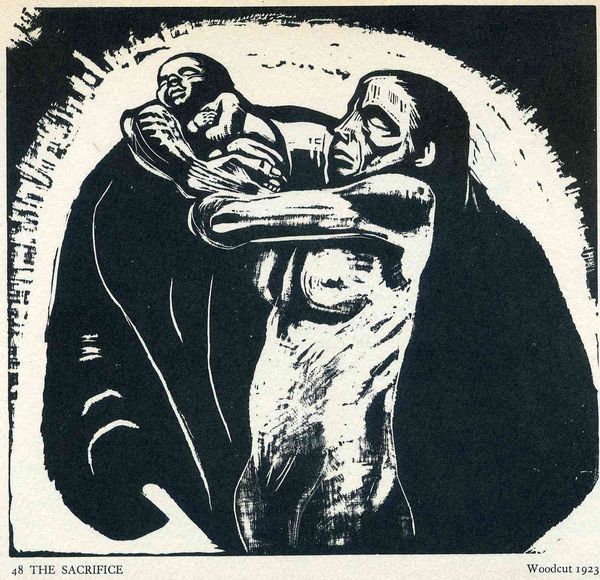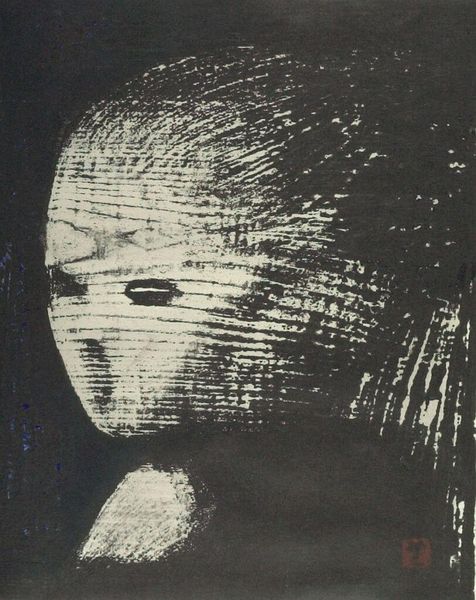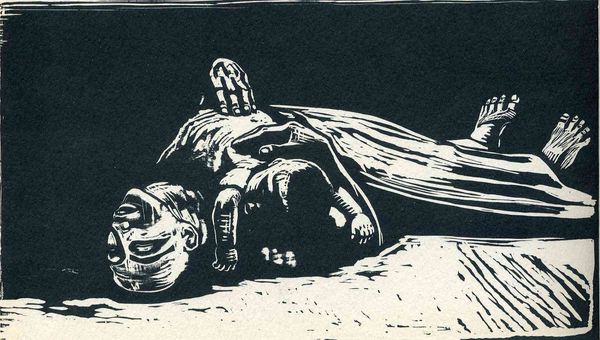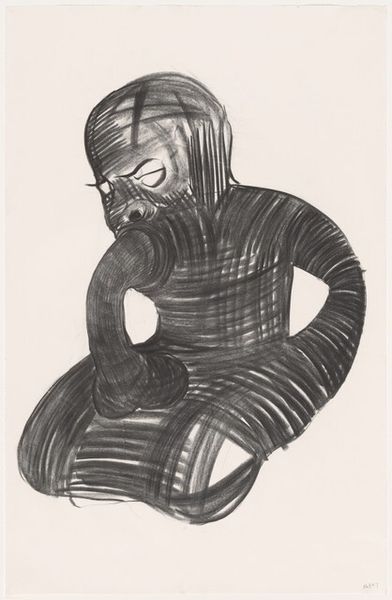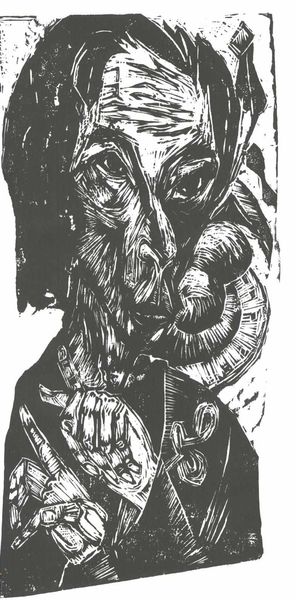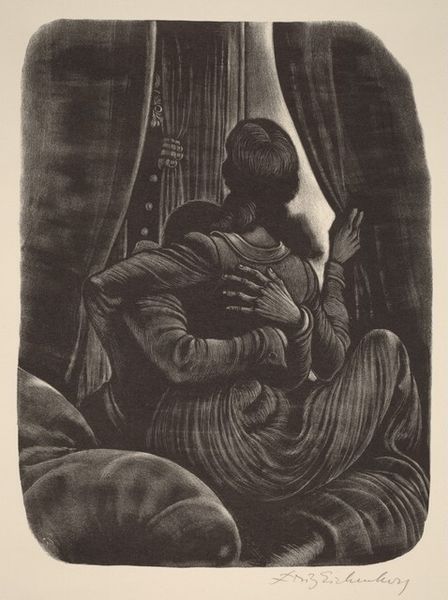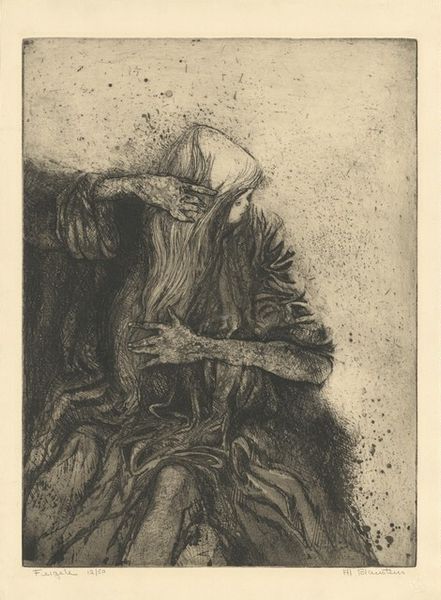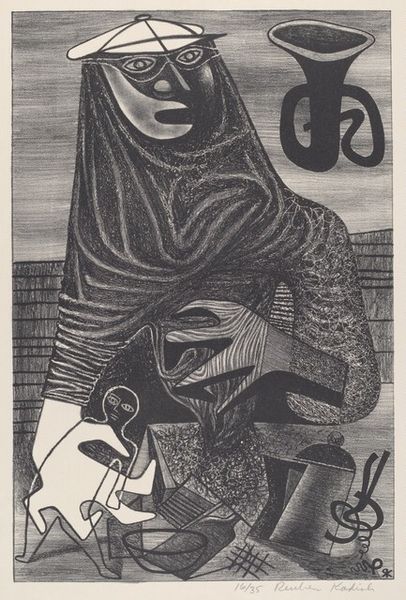
drawing, print, relief-print, woodcut
#
portrait
#
drawing
# print
#
relief-print
#
german-expressionism
#
expressionism
#
woodcut
#
portrait drawing
#
portrait art
Copyright: Public domain
Editor: Here we have Käthe Kollwitz's 1922 woodcut, "The Parents," at the National Gallery of Art. It’s striking; the stark contrast and heavy lines evoke a strong feeling of grief or despair. What do you see in terms of the work's power and how it’s achieved through its materials? Curator: Kollwitz’s choice of woodcut is crucial. It wasn’t merely a convenient medium; it was integral to expressing the raw emotion embedded in the subject. The laborious carving process, removing material to create this image of mourning, mirrors the sense of loss and depletion experienced by the parents. Notice the stark black and white— it amplifies the brutal reality and the emotional weight borne by those represented. Editor: So, you're saying the *making* of the print reinforces its emotional message? How does that connect to the historical context? Curator: Absolutely. Kollwitz lived through periods of immense social upheaval and personal tragedy. Woodcut, with its associations with folk art and readily available materials, allowed her to directly engage with a wider audience, bypassing the elite art establishment. It was a democratic medium. The German Expressionists embraced it precisely for its unrefined directness. Consider how its affordability allowed this piece to be distributed widely during times of war and poverty. How might this contrast with a medium like oil painting? Editor: Oil paint implies a certain level of financial stability... it suggests patronage and access in ways that a simple woodcut just doesn't. And, thinking about that audience access you mentioned… Curator: Precisely! The labor embedded in creating each print also speaks to the working-class realities she depicted. It wasn't just about aesthetics, but a material engagement with the struggles of her time. Editor: It makes me consider the physical and emotional toll not just on the parents depicted, but also on Kollwitz, the artist who made this moving image. Curator: Indeed. This understanding alters how we perceive and value art, shifting from simple appreciation to an understanding of production and societal impact.
Comments
No comments
Be the first to comment and join the conversation on the ultimate creative platform.
